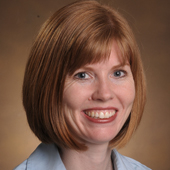THIS ARTICLE IS MORE THAN FIVE YEARS OLD
This article is more than five years old. Autism research — and science in general — is constantly evolving, so older articles may contain information or theories that have been reevaluated since their original publication date.

Most parents want to know what the future has in store for their child — parents of children with autism are no exception. A decade ago, we had little insight to offer the latter, particularly when thinking about the transition to adulthood.
Since then, however, researchers have documented some of the challenges young adults with autism face in pursuing post-secondary education or finding fulfilling jobs. Their studies have highlighted a dearth of services for people with autism after they leave high school.
There is still much we don’t know about young adults with autism, including how best to measure their success in various realms, and the psychological benefits of employment or friendship. Identifying predictors of happiness and satisfaction for adults with autism can guide the development of services and interventions that enhance quality of life for this population.
My colleagues and I have made inroads into one aspect of this vast topic. We examined how individuals with autism navigate the change in social circumstances that occurs when they leave high school.
We have found that not all of them show clear signs of falling off a social cliff. The ones who fare best are those who participate in organized activities in high school.
Social stability:
My colleagues and I began our study of social participation in recent high school graduates in 20151. As part of that study, we looked at whether changes in participation track with so-called ‘internalizing symptoms,’ such as signs of anxiety or depression.
We looked at two types of social participation in a group of 36 people with autism between the ages of 18 and 22 who were all in their last year of high school. One type of interaction was informal — unstructured time spent with peers — and the other involved structured activities, such as gathering at a church or playing on a sports team.
Most participants in high school did not spend much time in unstructured interactions: Fifteen of them (42 percent) never spent leisure time with people from school or work over the past year, and 13 never socialized with friends or neighbors.
We found that after leaving high school, 21 of the 36 spent even less time participating in structured social activities than they had before. Another eight individuals did not change in their participation in structured activities, and the remaining seven participated more than they had before. Nearly twice as many young people (12 versus 7) increased the amount of unstructured time they spent with friends, coworkers, classmates or other peers.
So our data do not bear out the assumption that young people with autism universally experience increasing social isolation after leaving high school.
We’d like to better understand the characteristics of the young people who become less, rather than more, socially isolated after high school. We don’t know, for example, whether those who participate more after leaving school are the same ones who successfully transition into jobs or post-secondary education.
Emotional effects:
Young people with autism who score high on measures of internalizing symptoms tend to participate in fewer structured and unstructured social activities after leaving high school than do those who score low on those measures. This points to the need for additional supports for teens with autism who also have anxiety or depression.
Increasing social isolation might make it more difficult for these young people to obtain and maintain a job or stay in school. As we learn more about psychiatric conditions among people with autism, it will be important to also investigate what supports they need to successfully transition to adulthood and how these conditions affect them as adults.
Our data hint that participating in fewer unstructured social activities during high school is associated with more mental health problems after graduation — although this finding is not statistically significant.
We also found that young people with autism who spend time participating in clubs and team sports tend to show less of a decline — and in some cases, a greater increase — in unstructured social participation after leaving high school. This result is statistically significant.
Treatment opportunity:
It may be that social ties fostered during these structured activities better prepare these young people to develop relationships in adulthood.
This reveals a treatment opportunity: Adults should encourage and facilitate such participation among high school students with autism. In addition to joining sports teams and church groups, these students could take part in school plays or join after-school clubs. It is difficult to teach the range of skills required for friendships, and much easier to create opportunities for structured social participation.
We know this transition period affects some individuals with autism differently than others. The changes young adults with autism experience during this time do not seem to have uniform implications for their mental health or quality of life.
We must follow up this work with larger studies that can capture the diversity of their needs and abilities. That information can help us create support programs for the emotional and practical problems these individuals face during this time.
Julie Lounds Taylor is assistant professor of pediatrics and special education at Vanderbilt University in Nashville, Tennessee.

By joining the discussion, you agree to our privacy policy.